| Botanical Name |
|
| Family |
Buddlejaceae - The buddleja family. |
| Pronunciation |
BUD-lee-ah sal-vee-eye-FOH-lee-uh |
| Common Name(s) |
English: Butterfly Bush; Sagewood; Wild Sage
Afrikaans: Bergsalie; Kleinsalie
IsiXhosa: ilotana; igwangi; Cwangi
|
| Plant Group |
- Shrub A woody plant of relatively low height, having several stems arising from the base and lacking a single trunk; a bush.
|
| Plant Size |
- Large
| Tree | 18m to 25m |
| Shrub | 3m to 4m |
| Perennial/ground cover | 75cm to 1m |
| Bulb | 80cm to 1.2m |
| Succulent | 1m to 1.5m |
|
| Position |
- Partial Shade The area is in shade for part of the day and in full sun for part of the day.
- Sun The area is in full sun for all or most of the day, all year round.
|
| General Information |
- Drought Tolerance: High The plant is well adapted to arid conditions; it can survive long periods of drought and high temperatures without extra water.
- Evergreen to semi-deciduous The plant is evergreen in warmer, wetter parts of the country, but may lose some of its leaves during winter in colder, drier situations.
- Fragrant / Aromatic These plants posses a strong, usually pleasant odour.
- Frost: Hardy The plant can withstand freezing temperatures or frost without artificial protection.
- Prune hard after flowering Fast growing shrubs that grow lanky within a season. Cut off branches and stems of these plants to a third of their original length. This will increase the yield of flowers, improve the plants shape and enhance the structural strength of main branches.
- Salt spray tolerant A plant with specific adaptations enabling it to grow in a saline environment.
- Sand tolerant Plants adapted to survive in nutrient poor, very sandy soils.
- Water Wise Plant species originating from low rainfall regions that require less water to survive and thrive than other plant species.
- Wind Tolerant Plants able to withstand the effect of strong winds.
|
| Specific Information |
Buddleja salviifolia makes a quick hedge if pruned. Useful as a background plant. An excellent pioneer for new gardens as slower plants or trees can utilise the temporary protection they provide. These shrubs are decorative when in flower, but to keep them reasonably neat and bushy, it is advisable to prune them back in winter.
|
| Ad Break |
|
| Flowers |
| Description |
a profusion of very small blooms in large heads
|
| Season |
- Spring to Summer Plants will seldom bloom for the entire season as given in the list, but should flower during a period within these parameters.
|
| Colour |
|
| Growth Rate |
- Very Fast Specifying growth rate can be very misleading as there is considerable variation of growth rate depending on type and species of plant, available water, supplementary feeding, mulching and general care, as well as the plants suitability and adaptability to the garden environment.
|
| Plant Uses |
- Attracts bees, butterflies or other insects This plant attracts insects which can be food for birds or other creatures in your garden.
- Attracts Birds This plant will attract birds.
- Boundary A plant useful for planting around the edges of the property to form a green or colourful backdrop, an impenetrable hedge, to hide walls or create privacy.
- Filler Either a fast growing tree or shrub used temporarily to fill in an area while the permanent plants grow to a desired size, or a plant used to fill gaps in borders or beds.
- Hedge Suitable trees or shrubs planted relatively close together so that the branches intertwine to create a barrier. This can be formal – the plants are regularly trimmed to produce a neat shape, or informal – the plants are left to themselves to create a natural hedgerow.
- Pioneer for new gardens A very fast growing plant, able to withstand hardship, that can be used to populate land that has recently been cleared of natural vegetation. These plants pave the way for slower-growing species by adding nutrients to the soil and creating leaf litter.
- Provides light / dappled shade A tree with an open to sparse canopy, through which varying degrees of sunlight can penetrate.
- Screen A tall hedge of suitable plants planted closely together and used as a windbreak, to block a bad view, to separate parts of the garden or as a backdrop.
- Stabilize Banks Plant is used to prevent soil erosion because their roots will form a mat that stabilizes the soil and keeps it from washing away in heavy rains.
- Suitable for coastal gardens Plants adapted to dry, sandy soil, forceful wind, limited rainfall and intense sunlight.
- Suitable for seaside gardens Plants that will survive the hostile environment of harsh salty winds, dry sandy soil, irregular rainfall and heat found in seaside gardens.
- Suitable for smaller gardens Such plants do not have invasive root systems, remain small or controllable and can often be grown in containers.
- Wild Garden An indigenous garden planted for the benefit of wildlife and birds. Provides food, water, a variety of mini-biomes and no poisonous chemicals are used.
- Windbreak Trees planted in a row to form protection from prevailing winds by breaking the force of the wind, thereby reducing wind damage.
|
| Distribution and Habitat |
from the Western Cape through the Eastern Cape to Free State, Lesotho, Kwazulu-Natal, Swaziland, Northern Province, Mpumalanga, Mozambique and Zimbabwe, to tropical Africa, in forest margins, on rocky hillsides and along stream banks
|
| Planting Suggestions |
Sagewood grows easily in any soil, but adding compost will improve results. Protect from frost for the first season.
|
| Medicinal Uses |
Herbal tea can be made from the fresh or dried leaves. An essence boiled from the roots is used for a remedy for a cough and to relieve colic. An eye lotion is make from the leaves.
|
| Ad Break |
|


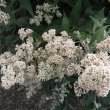
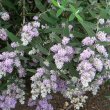
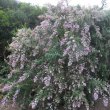
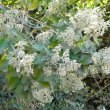
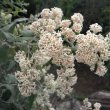
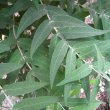
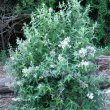
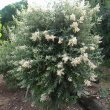
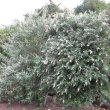
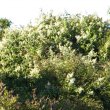


Comments
buddlea salvifolia
Hi there. I'm struggling with my Buddlea. I am in stilbaai and planted one last sept. but it just wont budge. It hasn't lost it's leaves but i expected it to be shooting new ones by now but it just remains dormant. It's about 500mm tall which is the size when I bought it. Any suggestions. Regards bob
Buddleja not growing
Hi Bob
Apologies for taking so long to reply. By now your Buddleja should definitely be showing signs of life. If not, prune it back by about a third and see if this shocks it into growth. If that doesn't work, I would replace it with another one. It does sometimes happen, for a variety of reasons, that a plant simply does not thrive.
Kind regards
Lorraine
Buddleia salviifolia seed?
Hi - I live in the US and this plant is not available in any nurseries here as far as I know. I live in the Pacific Northwest where our winters are fairly mild and would love to try it. Do you know of any source for seed? B. auriculata is another one that is similarly unavailable here, and I'd also be interested in locating seed for that. Thanks in advance for any information you could provide.
Buddleja seeds
Hi Bob
Go to silverhillseeds.co.za, an export seed company, for B. salviifolia, but they do not have B. auriculata listed.
You could also try:
http://www.seedsforafrica.co.za/
http://www.bidorbuy.co.za/
Hope you find what you are looking for.
Kind regards
Lorraine
Discuss this plant
Share knowledge, ask a question or give an experience.